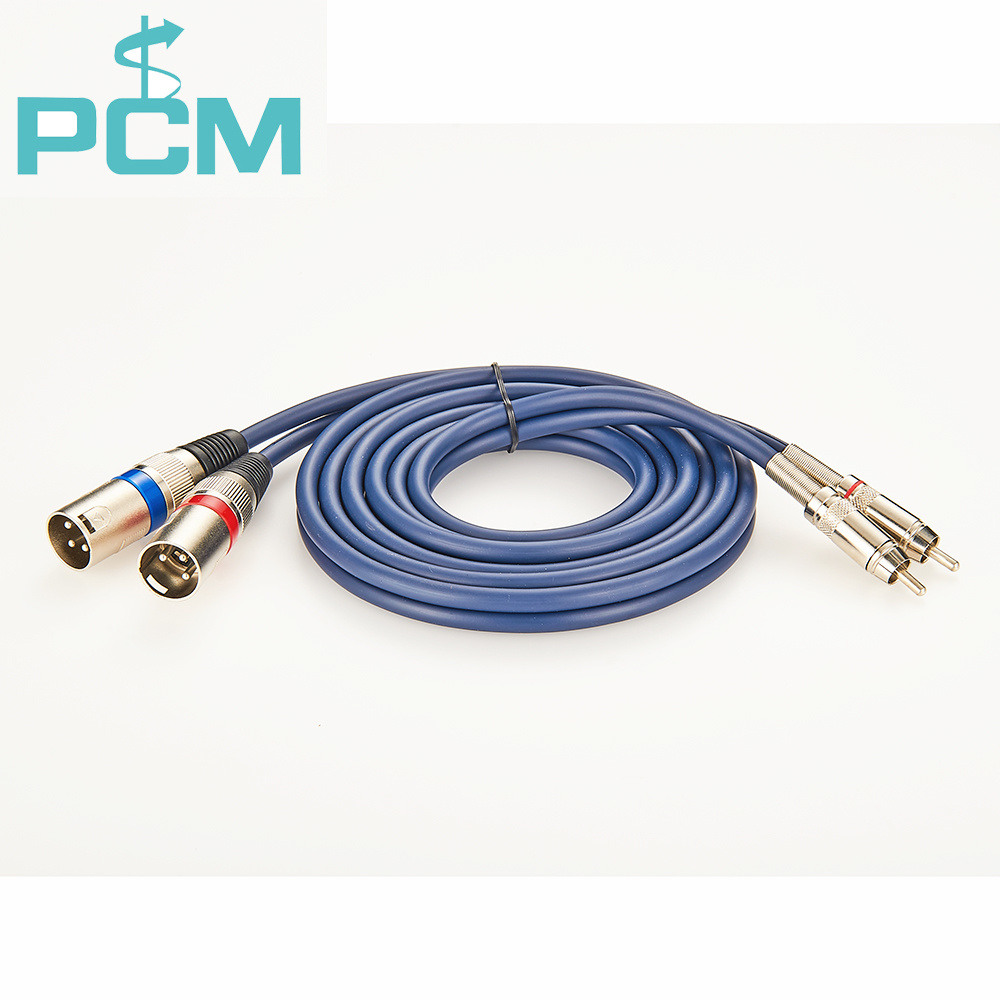 Esperanto
Esperanto
 Shqiptare
Shqiptare
 Euskara
Euskara
 Zulu
Zulu
 Latinus
Latinus
 Cymraeg
Cymraeg
 தமிழ்
தமிழ்
 Slovak
Slovak
 Slovak
Slovak
 Afrikaans
Afrikaans
News Center
XLR to RCA Cable manufacturers take you to understand the audio transmission interface
Publish:
2022-02-15 18:00
Source:
XLR to RCA Cable manufacturers tell you that in simple terms, an audio interface is a device that connects microphones and other sound sources to a computer, which acts as a bridge between analog and RCA. XLR to RCA Cable manufacturers tell you that audio interfaces are usually used with front microphones, and a range of others.

You may ask yourself this: "Since the audio interface is mostly used in conjunction with it, can I just buy a channel control row or a preamplifier?" XLR to RCA Cable manufacturers tell you to solve this problem. The key is the conversion between analog and digital. XLR to RCA Cable manufacturers tell you that traditional preamplifiers and channel control panels send out digital audio signals for computers. An audio interface is a device that converts an input analog signal into a digital signal output so that it can be used by a computer.
XLR to RCA Cable manufacturers tell you that if you care about the quality of your recorded audio, you'll quickly become unhappy with the limited audio capabilities that come with your computer. Since most consumer-grade sound cards are not equipped with high-quality analog-to-digital converters, the sound quality is reduced after the analog signal is converted to a digital signal. XLR to RCA Cable manufacturers tell you that if you just listen or use, then this analog/digital signal converter is enough. However, consumer-grade sound cards often lack the accuracy to achieve high dynamic headroom and audio signals, and cannot meet the needs of professional fields.
Another drawback of consumer grades is that most of them can only handle two channels of audio simultaneously, so it's almost impossible to capture a drum kit or an entire band without reprogramming the signal. XLR to RCA Cable manufacturers tell you that in addition to the poor quality of analog/digital signal conversion, consumer-grade sound cards are prone to excessive delay and jitter, resulting in poor overall sound quality.
Related News
What is a terminal block used for?
While there are many factors to consider when designing an overall system, terminal blocks are an optimal solution for complex electrical system connections. With a variety of color options and configurations, Premier Cable’ terminal blocks offer a range of options to meet your design challenges.
CAN-bus has been widely used in various automation control systems. For example, CAN-bus has incomparable advantages in various fields such as automotive electronics, automatic control, smart buildings, power systems, and security monitoring.
Introduction to M12 connector pin coding
M12 encoding types are A encoding, B encoding, D encoding and X encoding. A-code, B-code and X-code are some of the earliest developed and longest-available M12 connectors. The latest M12 coding types currently under development are K coding for AC and L coding for PROFINET DC.
Cables – What are the correct cable sizes for an NMEA 2000 network?
The three different sizes of NMEA 2000 certified DeviceNet standard cabling are "micro," "mid," and "mini."
What are the advantages of NMEA 2000?
The Premier Cable Starter Kits provide everything you need to get to create a basic NMEA 2000 network from scratch.
The role of DeviceNet terminal resistor
DeviceNet_network is a fieldbus network protocol based on Controller Area Network (CAN). In the DeviceNet network, the terminal resistor plays the role of compensation and protection for signal transmission. The function of the terminal resistor is to eliminate signal reflection and interference and ensure the signal transmission quality.
